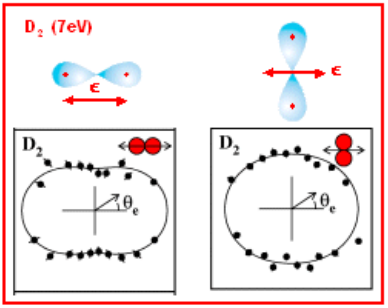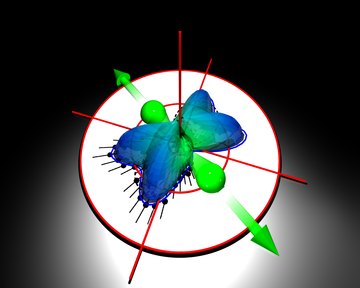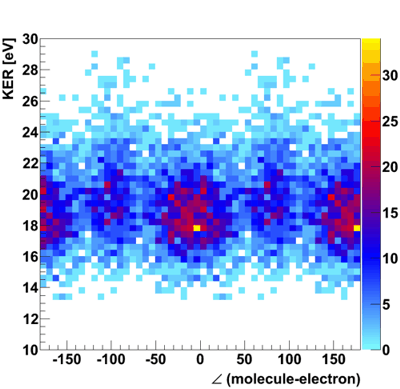|
The investigation of single photon complete fragmentation of the hydrogen molecule has
many fascinating facets.
Single electron detection (at 27eV above threshold):
 |
First experiments on double ionization of the deuterium molecule by just one photon were carried out at the Advanced Light Source of the Lawrence Berkeley National Lab. The kinetic energy release of the fragmented ions was measured in good agreement with theory. In addition one obtained the angular distribution of one of the emmitted electrons.
(click here for more...)
|
Low photon energies (hv=80 eV):
 |
At 80eV photon energy the wavelength of the outgoing electrons is significantly smaller than the internuclear distance. In this regime the electron angular distribution show the detail of initial and final state electron correlation. We have shown that the selection rules are different fom He double ionization and that the fully differential cross section strongly depend on the molecular orientation.
(T.Weber et al: Phys.Rev.Lett. 92 (2004) 163001)
The fully differential cross section also show a surprising dependence on the internuclear distance, which is related to the initial state correlation in the bond.
(T.Weber et al, NATURE 431, 437 (2004))
(click here for more...)
|
High Photon energies:
 |
For fast electrons the wavelength becomes comparable or smaller than the internuclear distance. Interference effects from the emission of the electron wave from the two centers of the molecule becomes important. Photoionization of hydrogen becomes a quantum laboratory to study fundamental questions of quantum mechanics. In this simple double slit the decoherence of the wave of one of the electrons induced by interaction with the second electron shows the first step of quantum-to-classical transition.
(D.Akoury et al. Science 318, 949 (2007))
(click here for more...)
|
The investigation of single photon complete fragmentation of the hydrogen molecule has
many fascinating facets.
Angular distribution of photoelectrons:
 |
At 150eV we investigated the kinetic energy release (KER) and the angular distribution of the emmitted photoelectrons with linear and circular polarized photons at the ALS in Berkeley. Results show a difference in the mean value of the KER at different polarizations.
(click here for more...)
|
|
|




